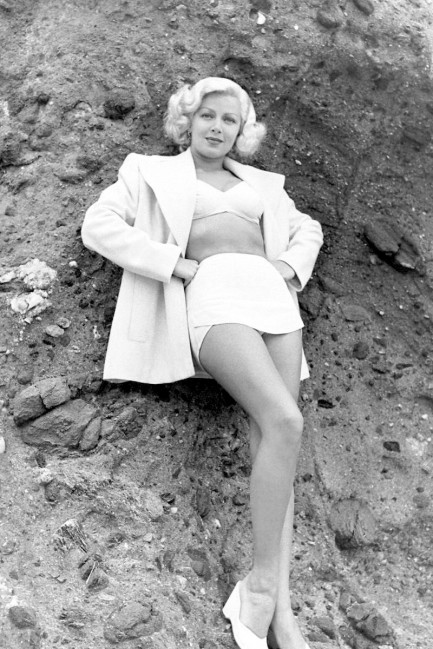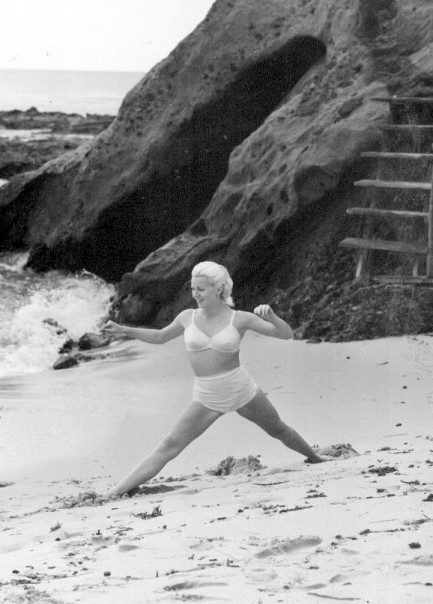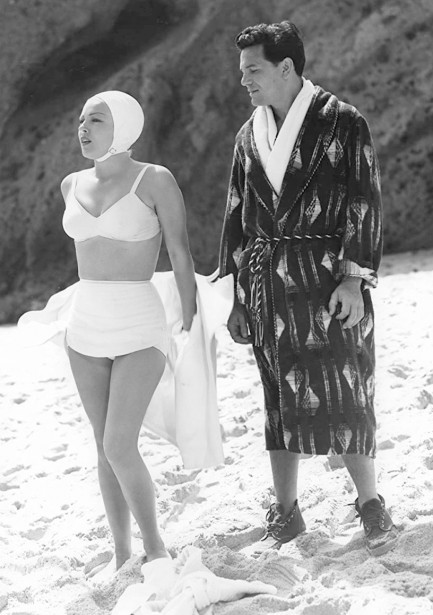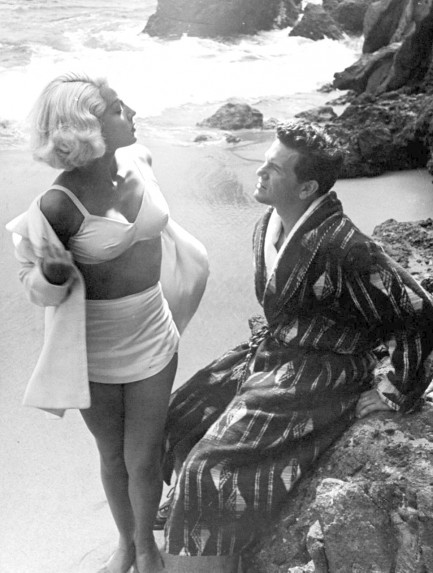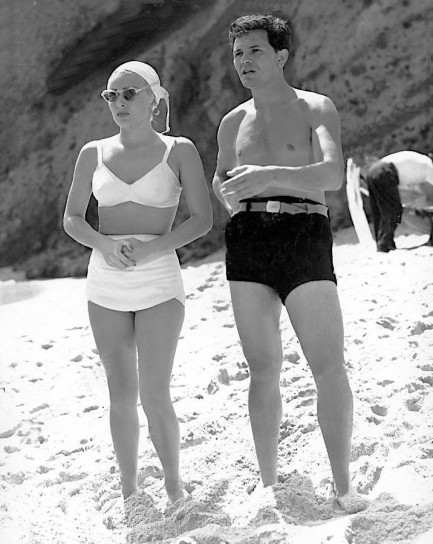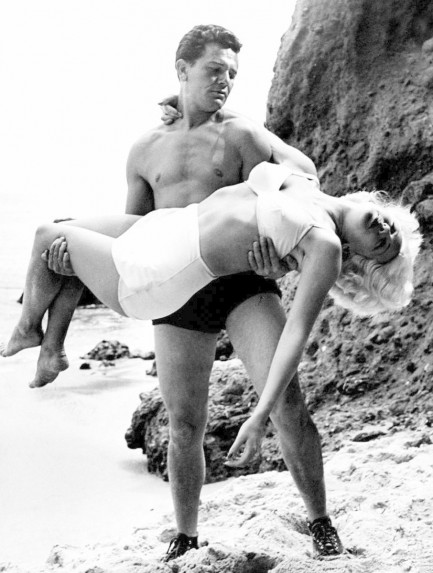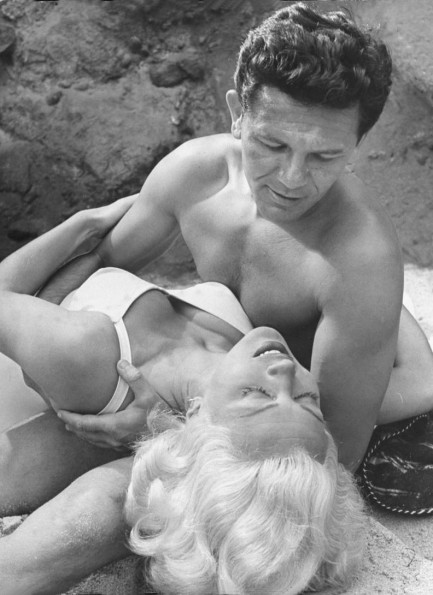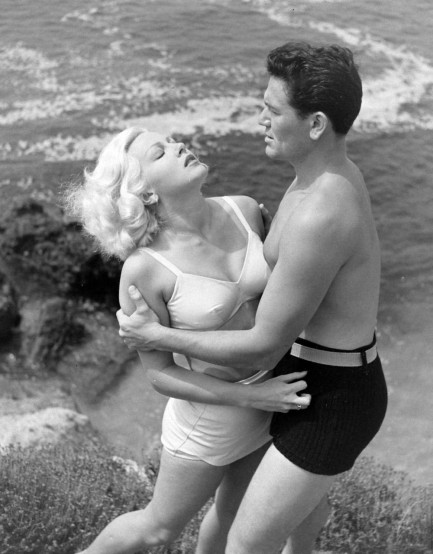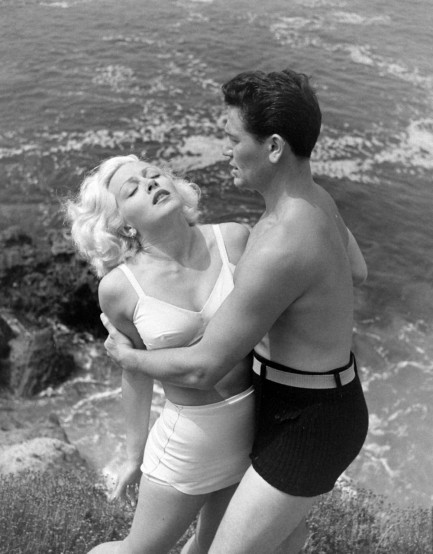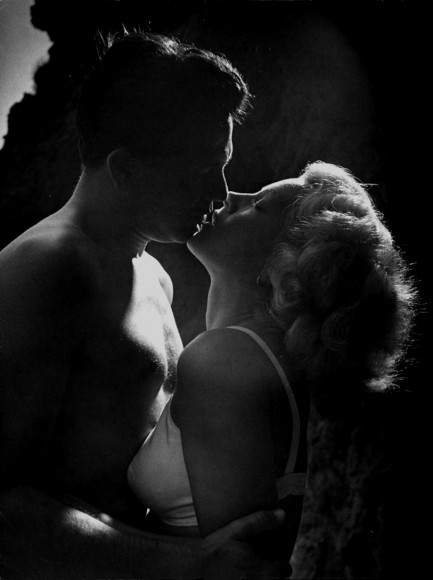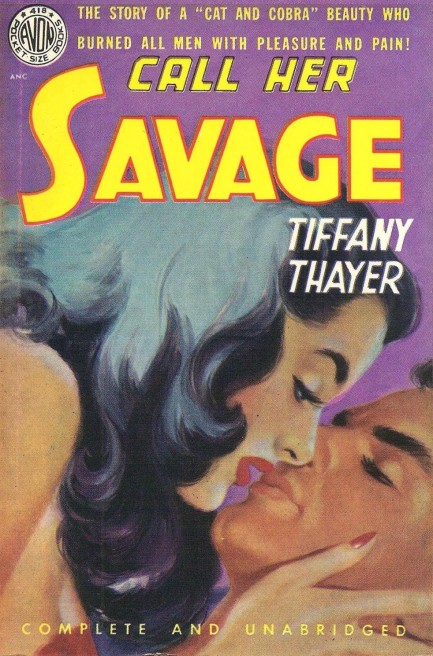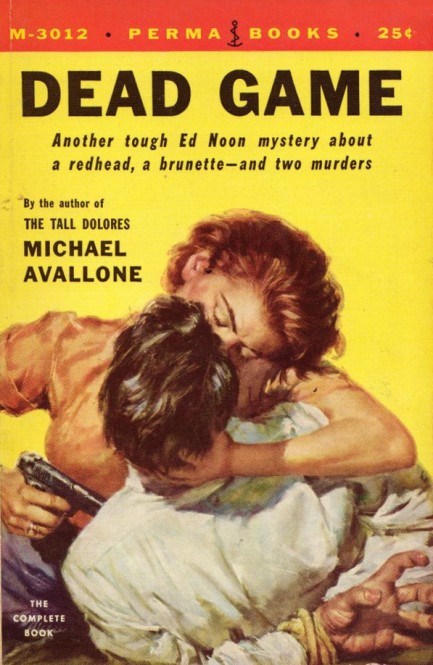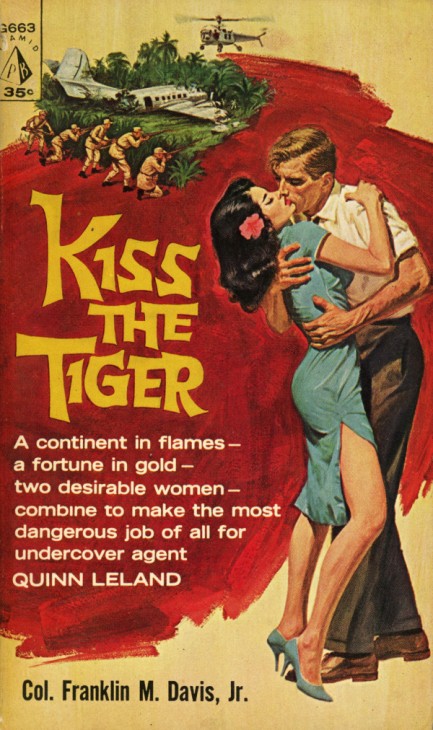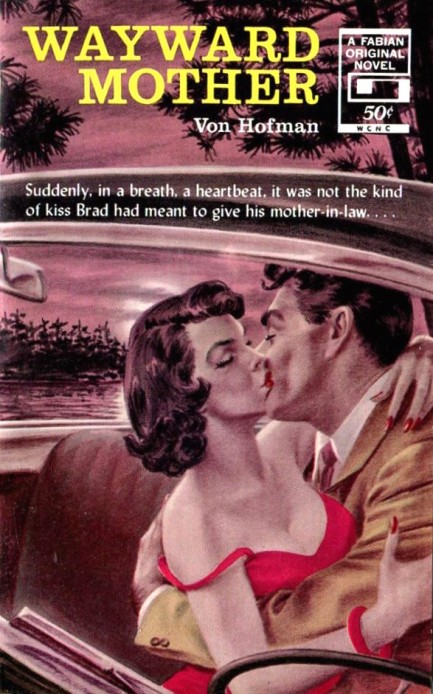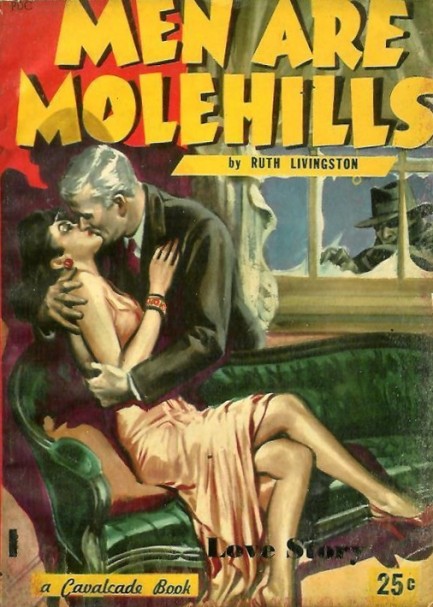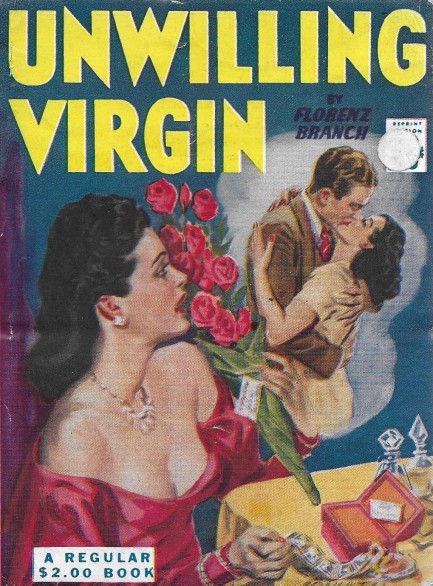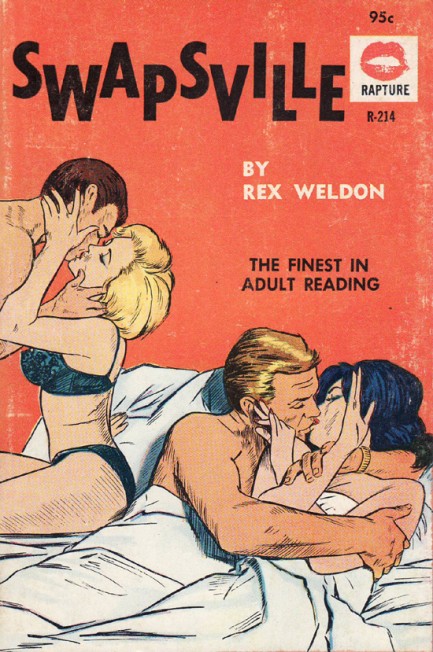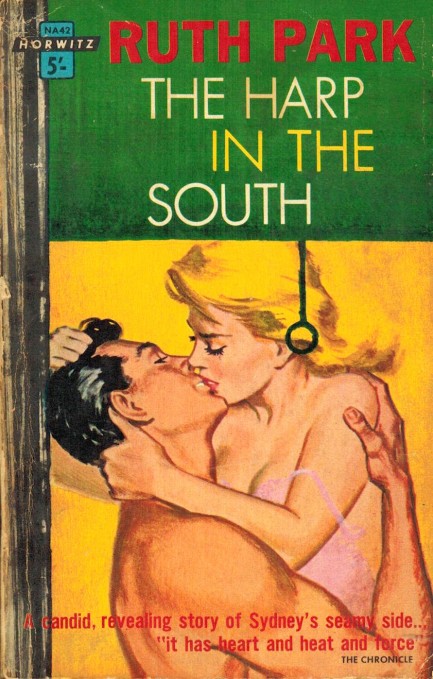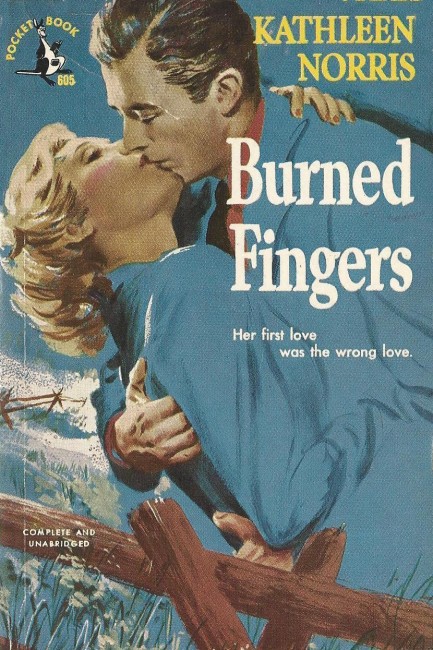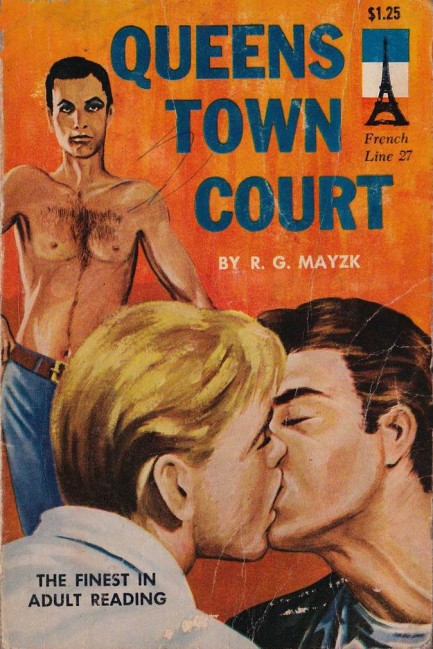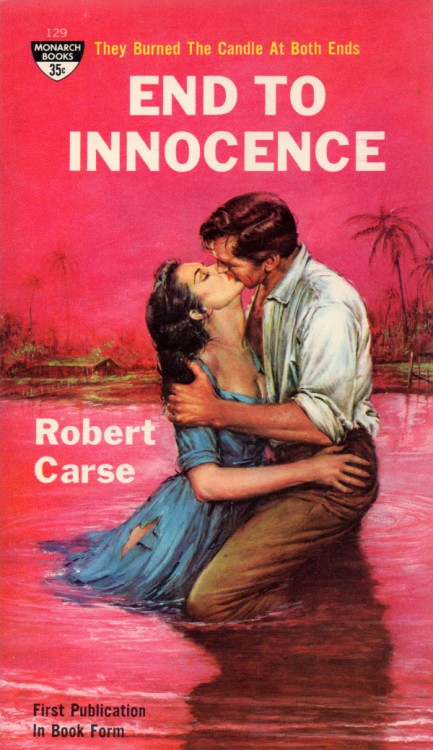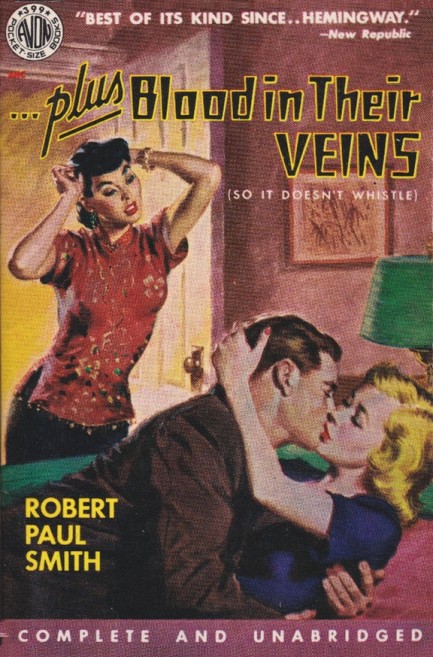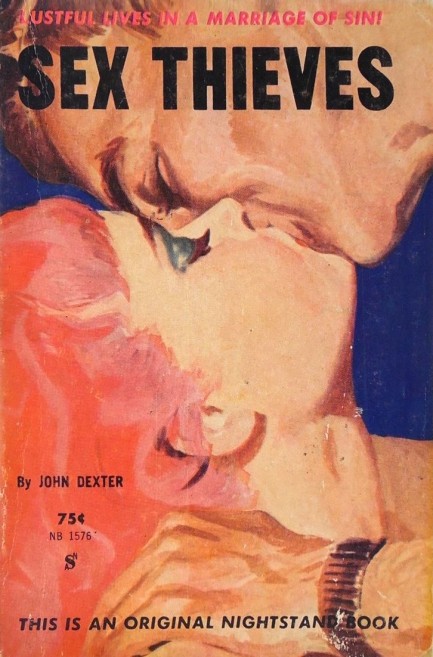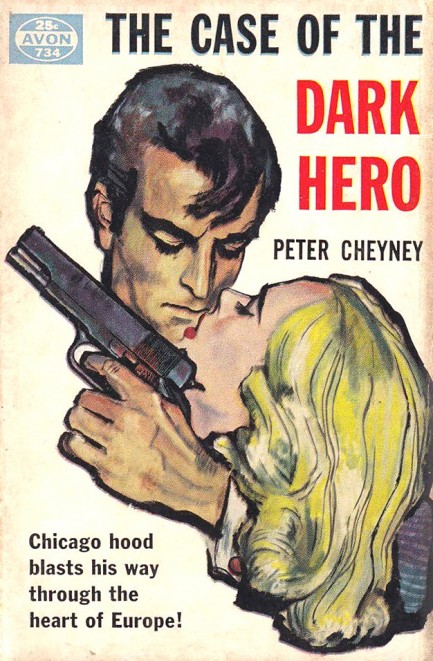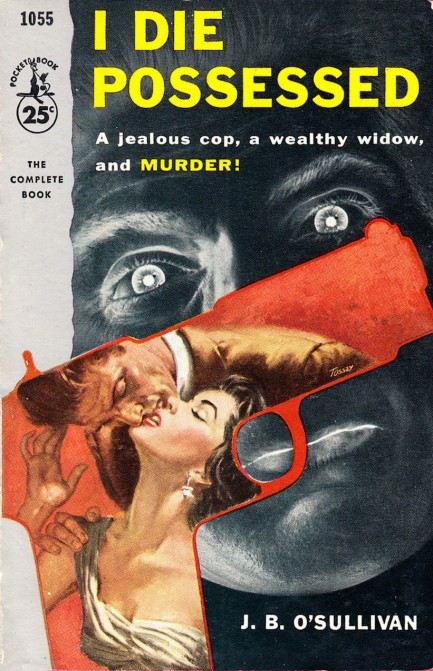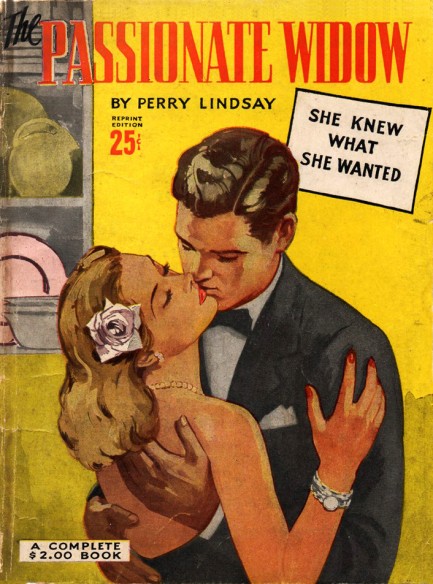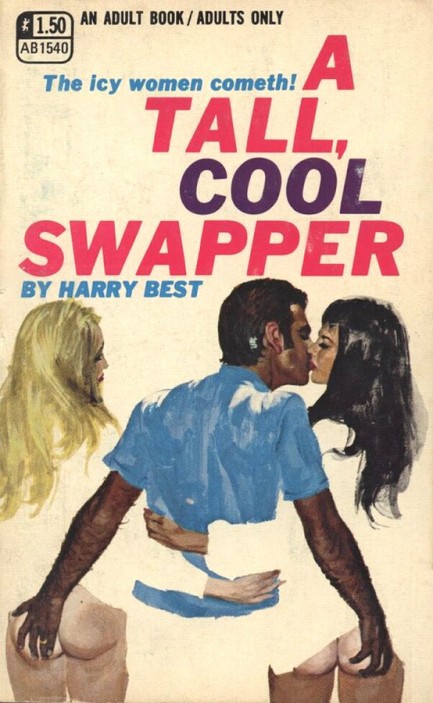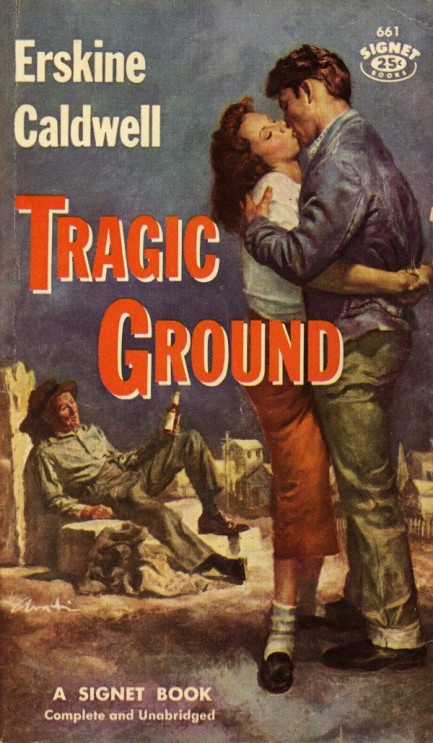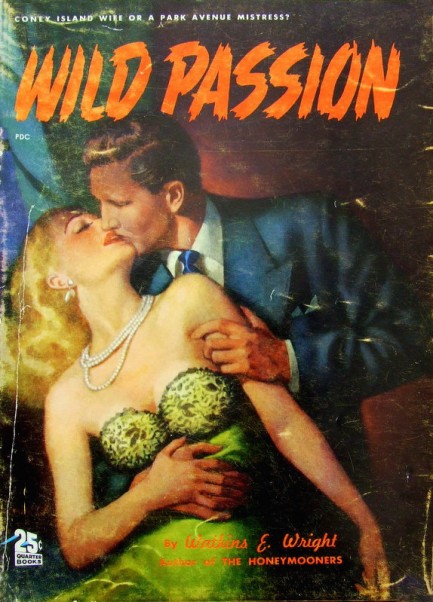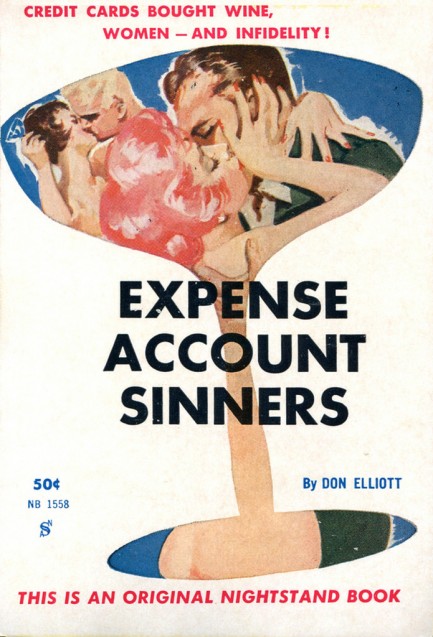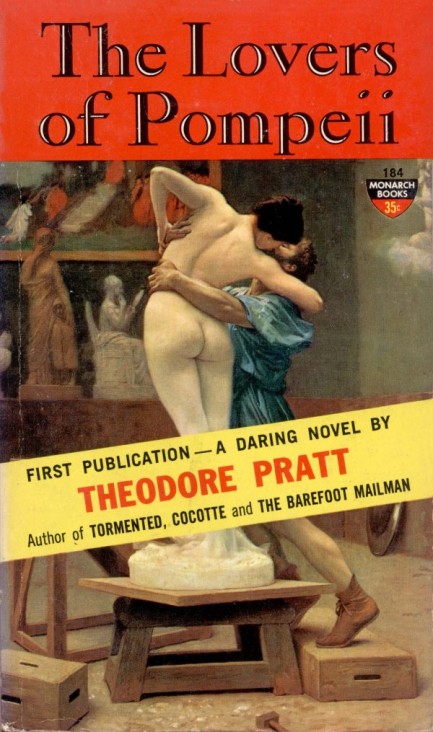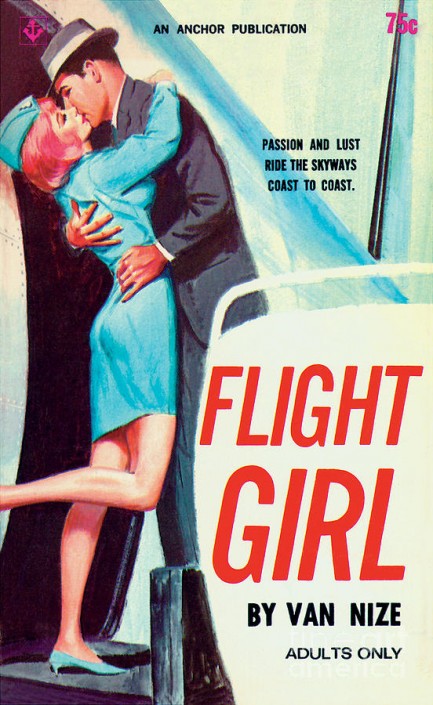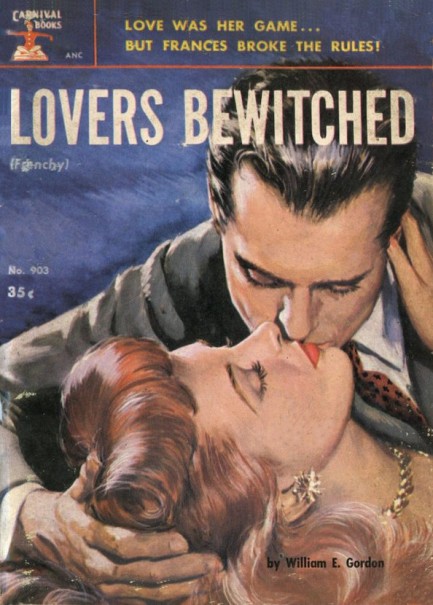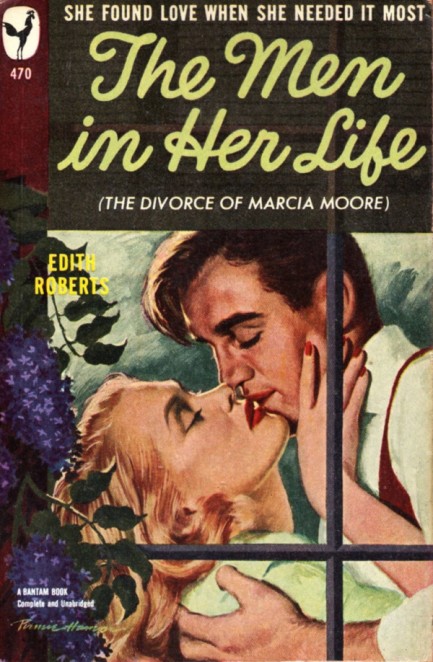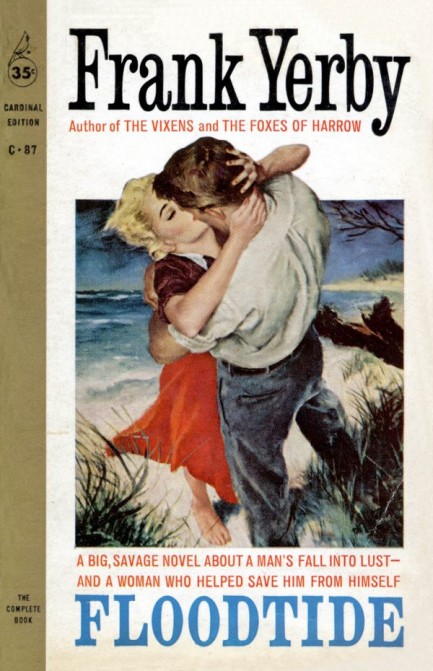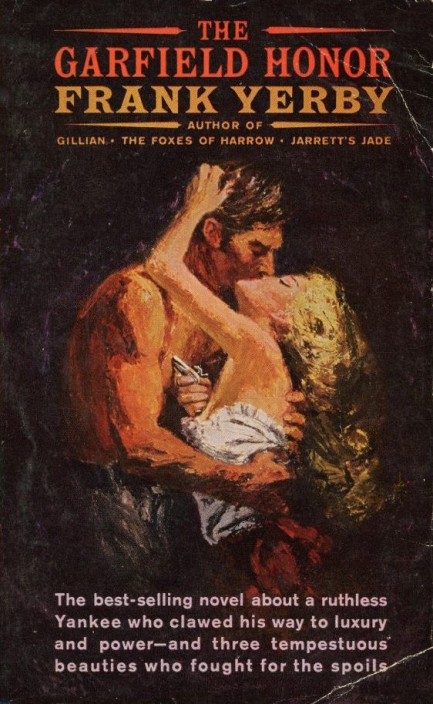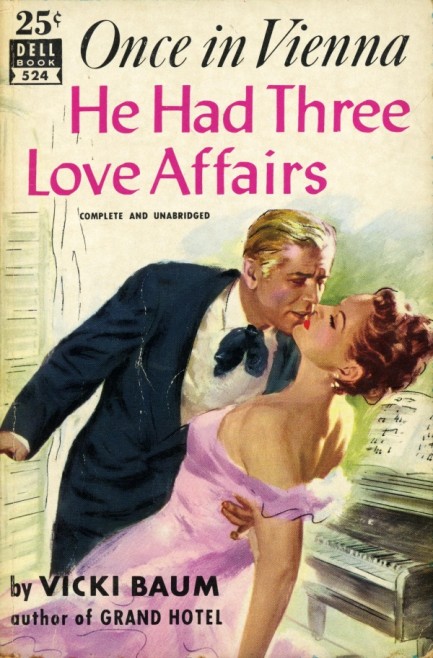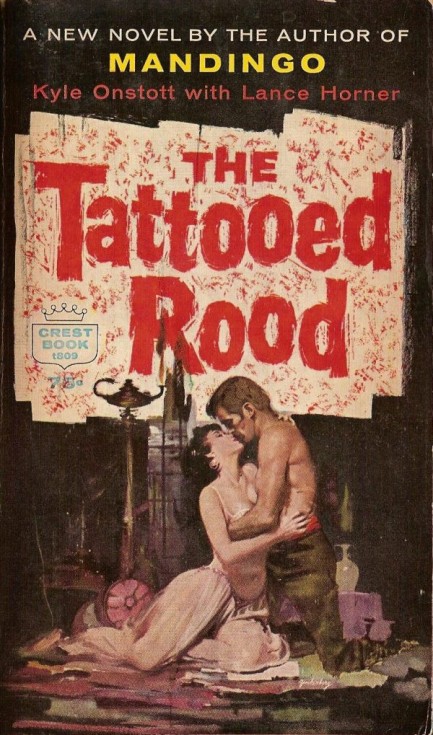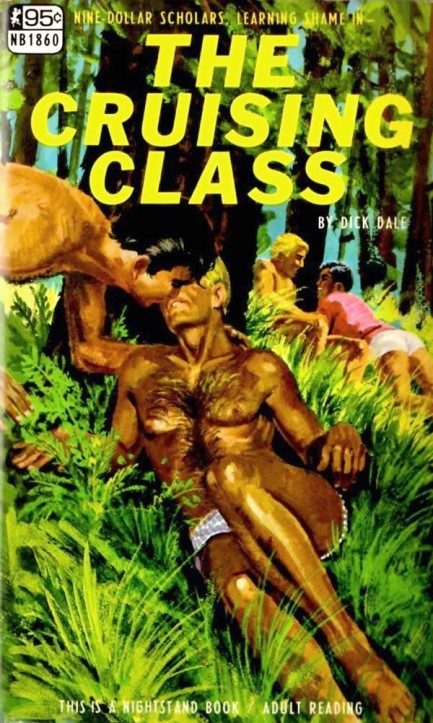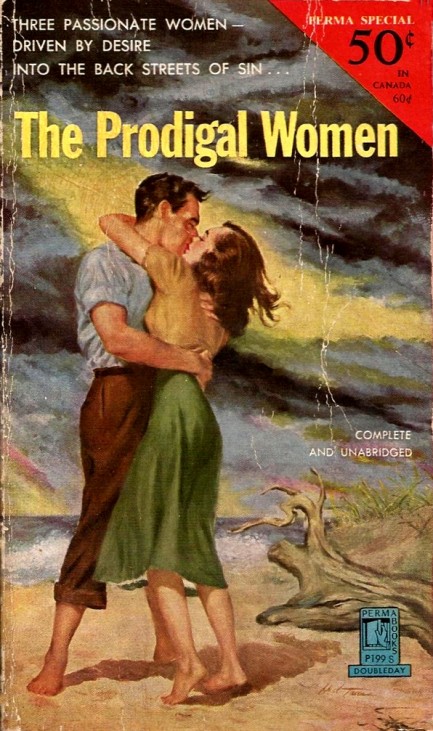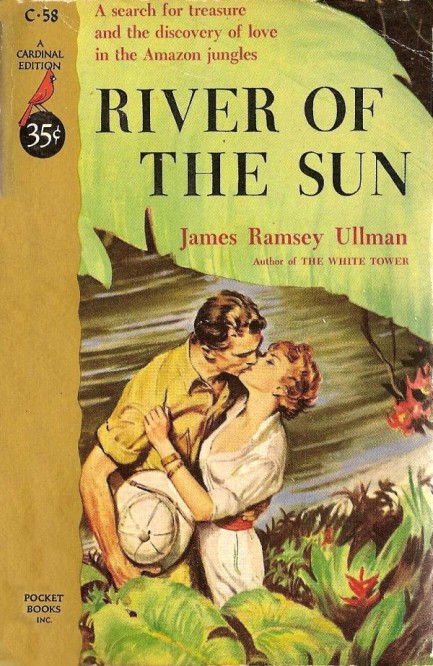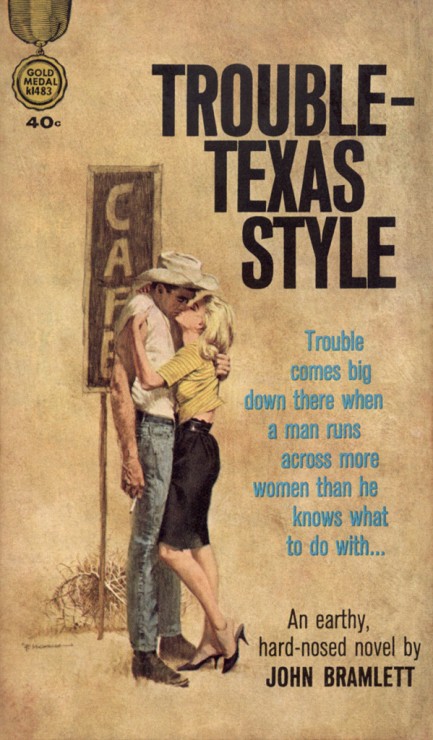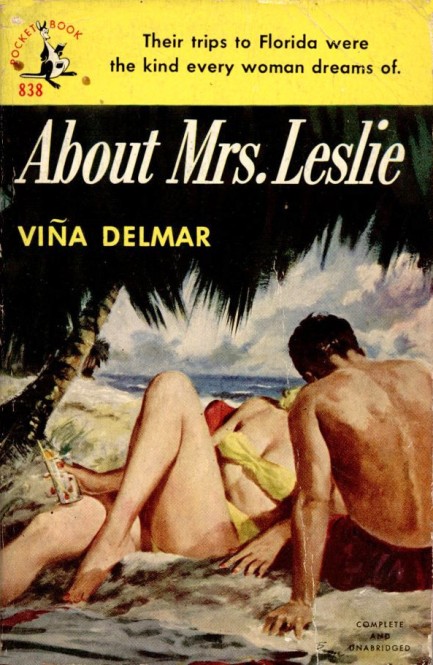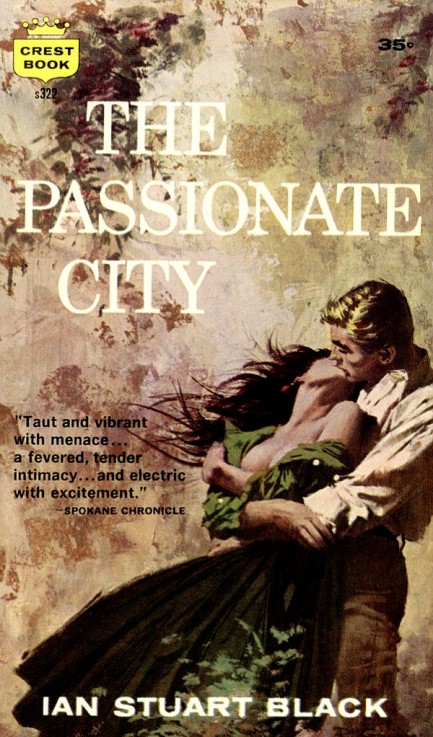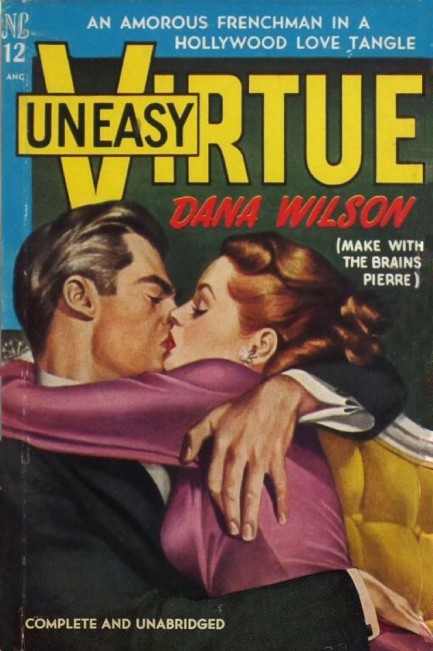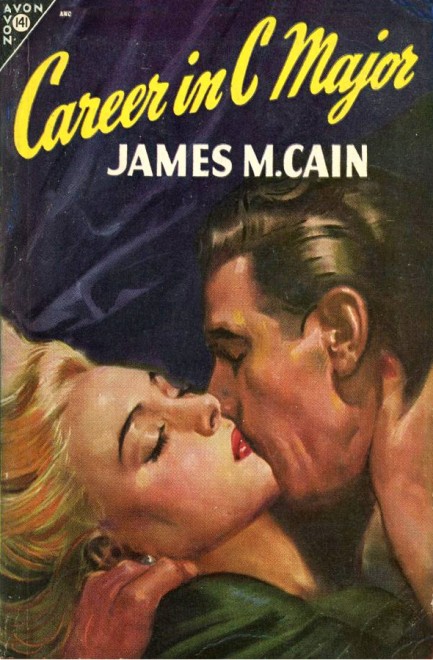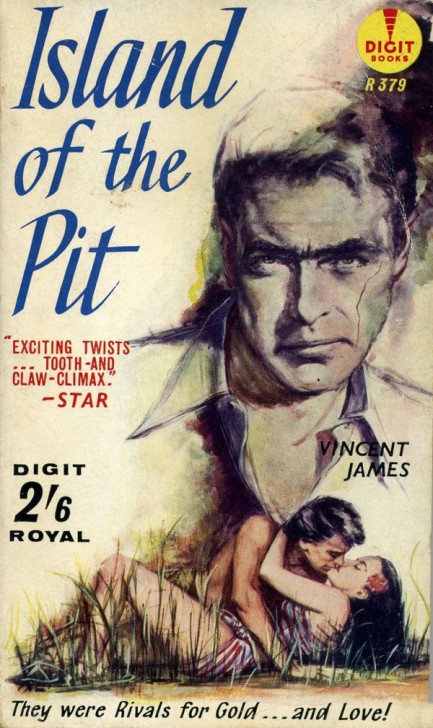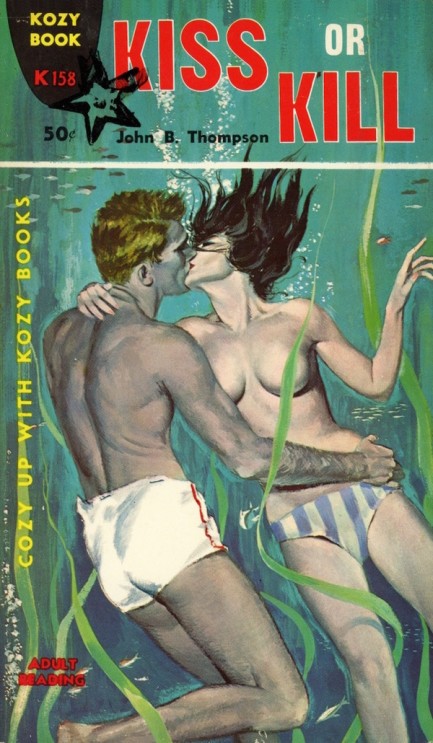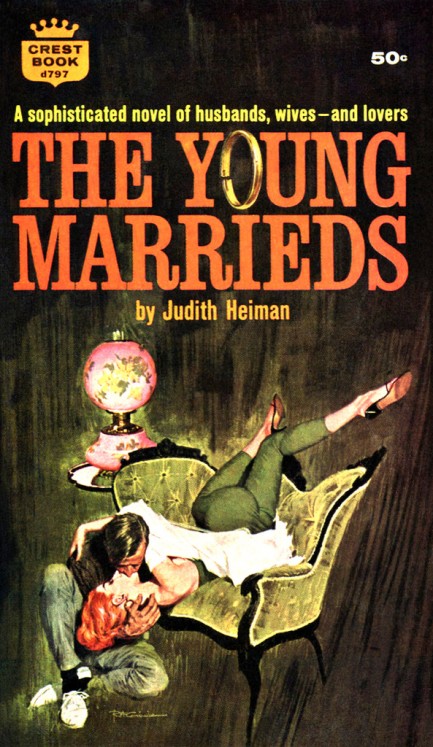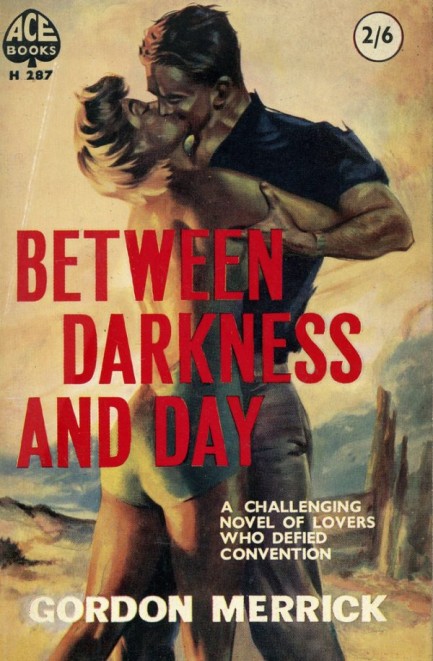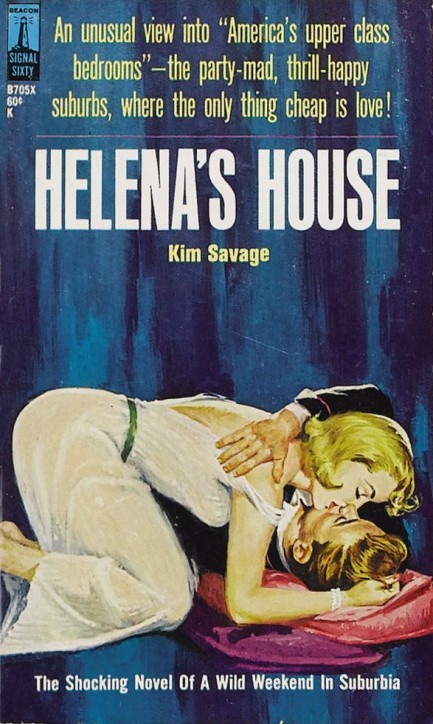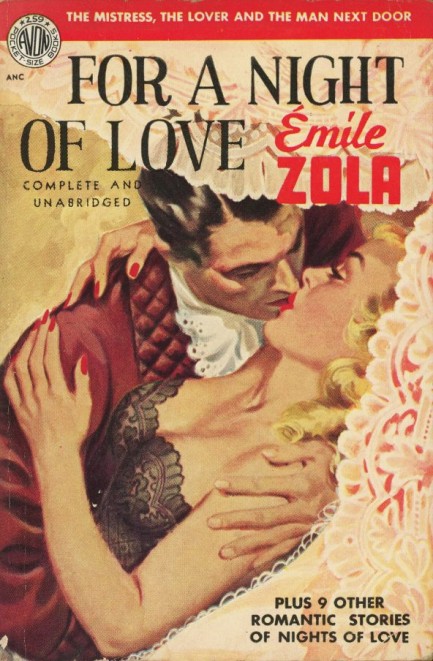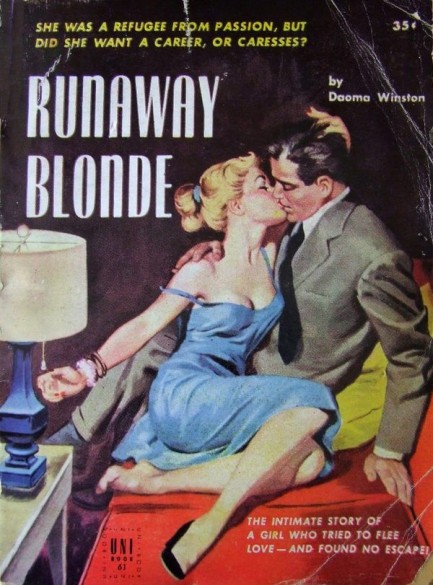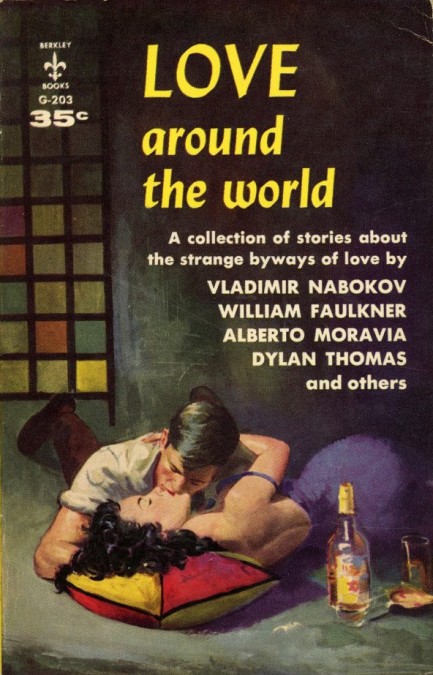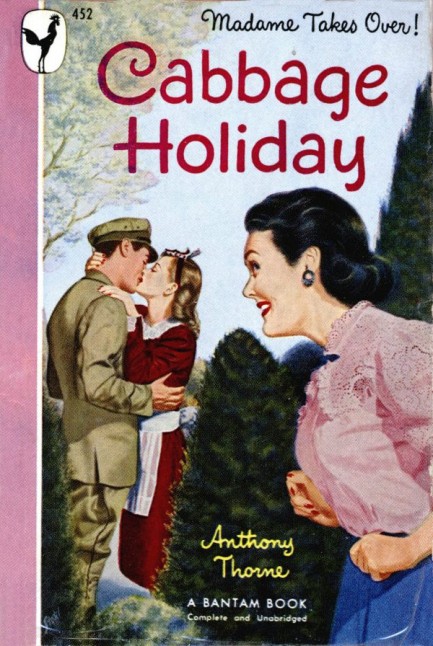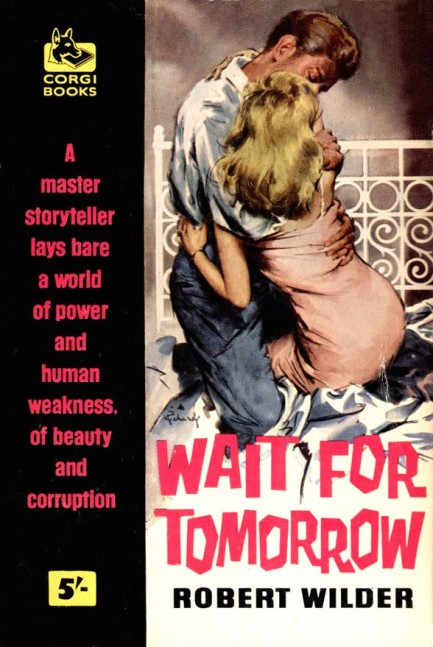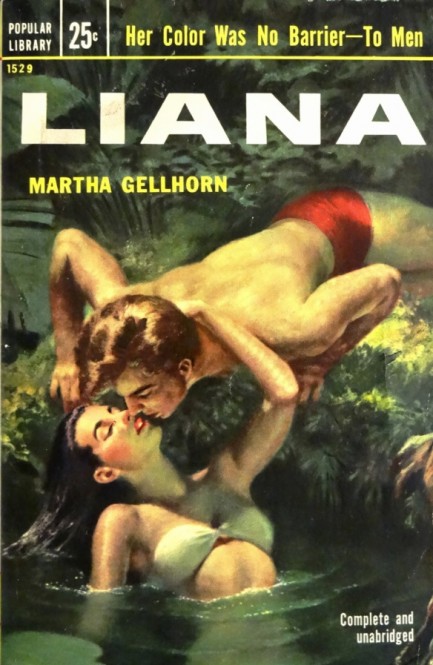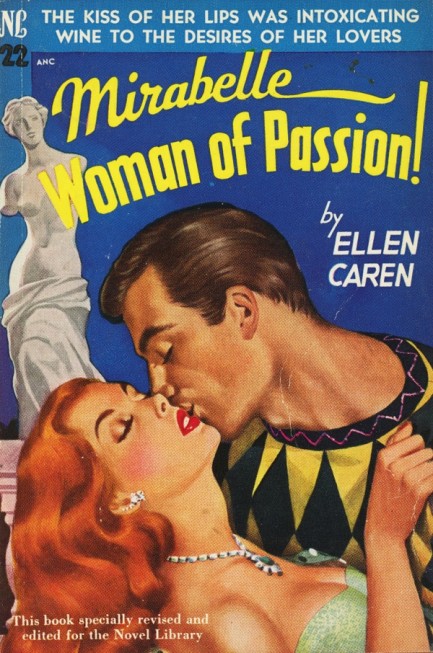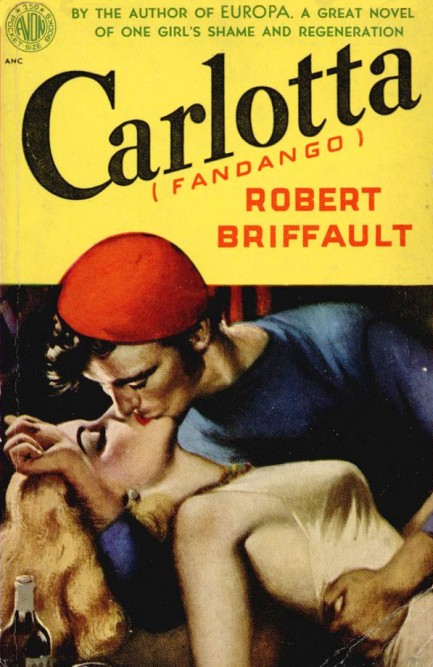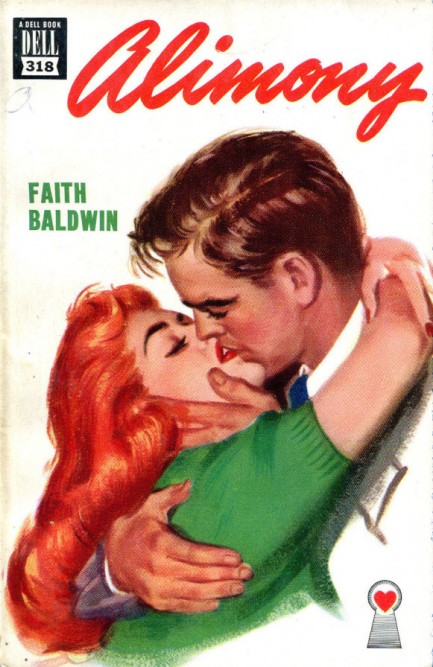 There's no jealousy like a femme fatale's jealousy. 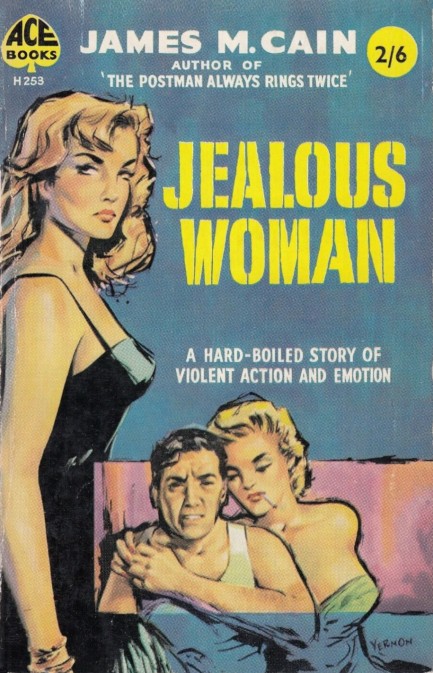
It's amazing how much easier James M. Cain makes writing seem than scores of other authors. His 1950 novel Jealous Woman starts at a gallop. Here's the first line: At the desk, when they said she was in 819, I knew hubby or pappy or somebody was doing all right by their Jane, because 19 is the deluxe tier at the Washoe-Truckee, one of our best hotels here in Reno, and you don’t get space there for buttons. And just like that we're off. Cain gives readers ambitious insurance man Ed Horner of General Pan-Pacific Insurance of California. Horner lives, works, and parties in Reno, where unhappy marrieds migrate to be freed from their nuptial bonds. He gets involved in a complex divorce/annulment scheme between Jane Delavan, her rich husband, Jane's ex-husband, and his current wife. Yes, it's a bit complicated, but a messy murder uncomplicates it a little. At least for readers. For Horner, things get weird. Jealous Woman isn't Cain's best, but it's still a slice of devious fun worth reading, and this Ace version with John Vernon cover art is the edition to buy if you can. 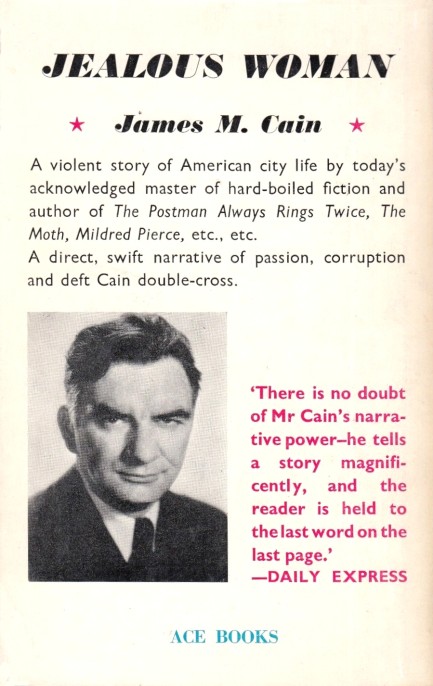
 In pulp you're always on the wrong side of the tracks. 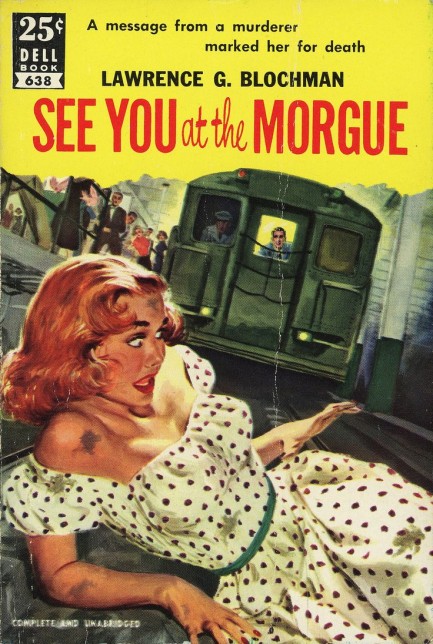
We're train travelers. We love going places by that method. It's one of the perks of living in Europe. Therefore we have another cover collection for you today, one we've had in mind for a while. Many pulp and genre novels prominently feature trains. Normal people see them as romantic, but authors see their sinister flipside. Secrets, seclusion, and an inability to escape can be what trains are about. Above and below we've put together a small sampling of covers along those lines. If we desired, we could create a similar collection of magazine train covers that easily would total more than a hundred scans. There were such publications as Railroad Stories, Railroad Man's Magazine, Railroad, and all were published for years. But we're interested, as usual, in book covers. Apart from those here, we've already posted other train covers at this link, this one, this one, and this one. Safe travels. 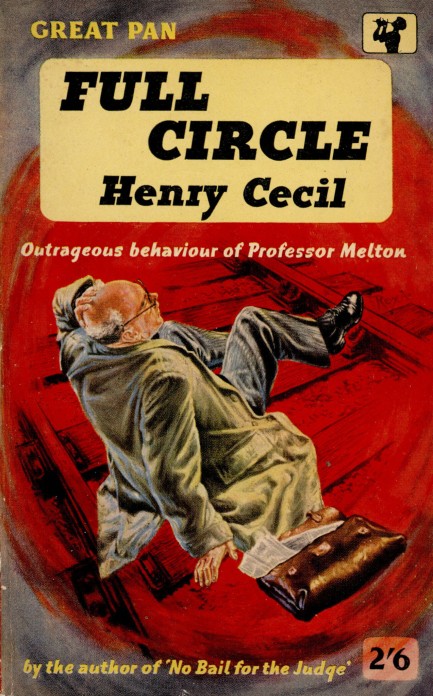 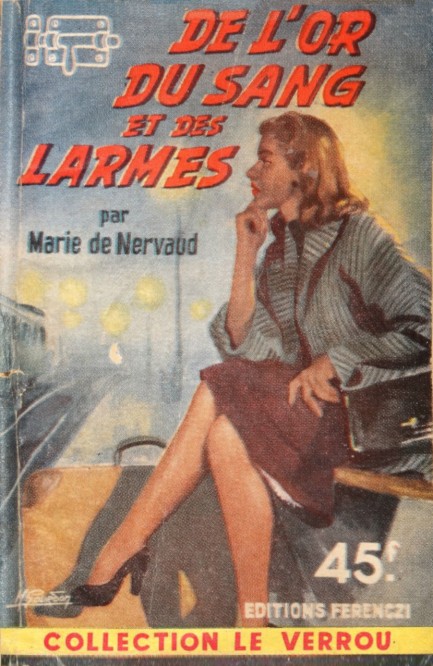 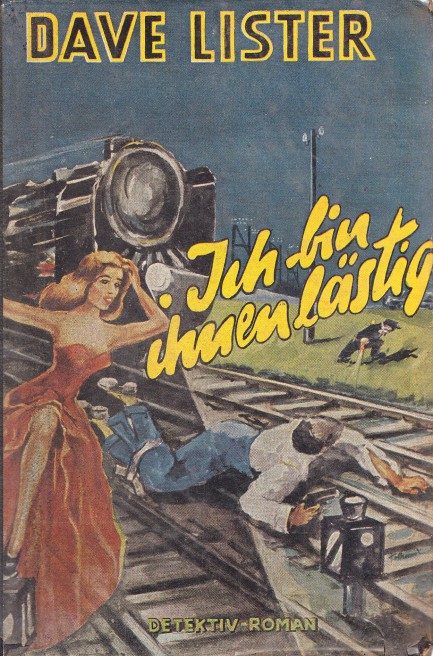 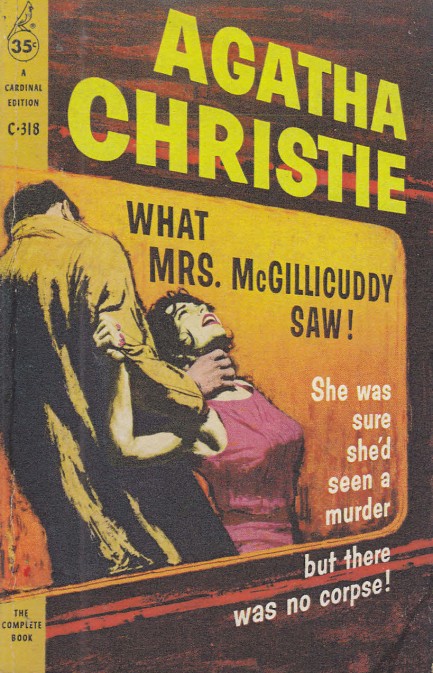 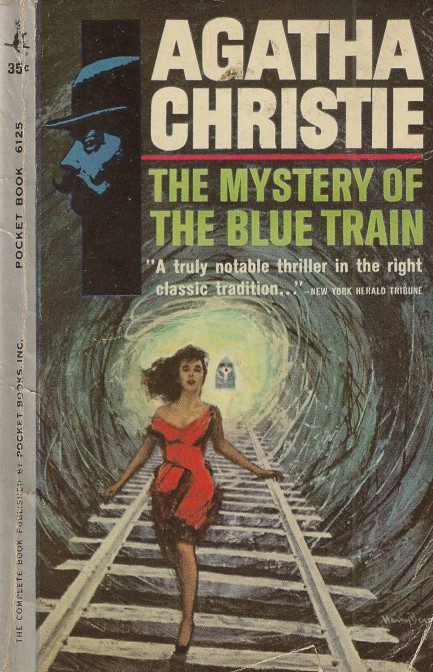 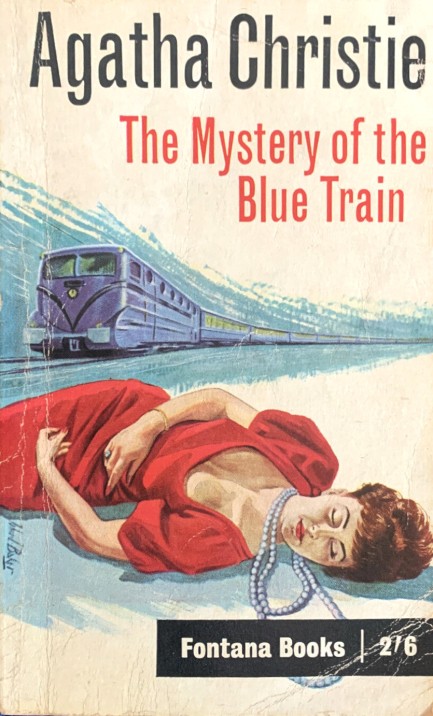  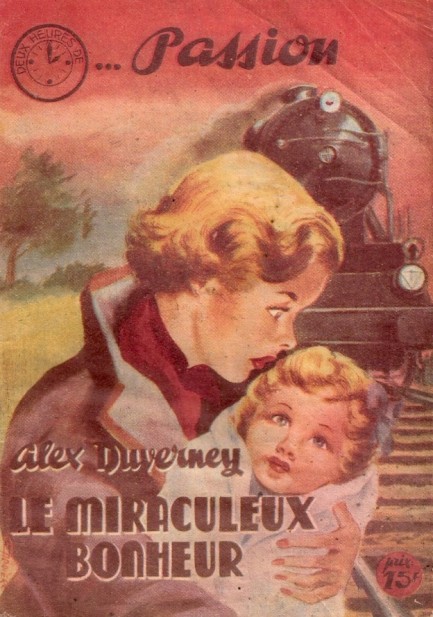 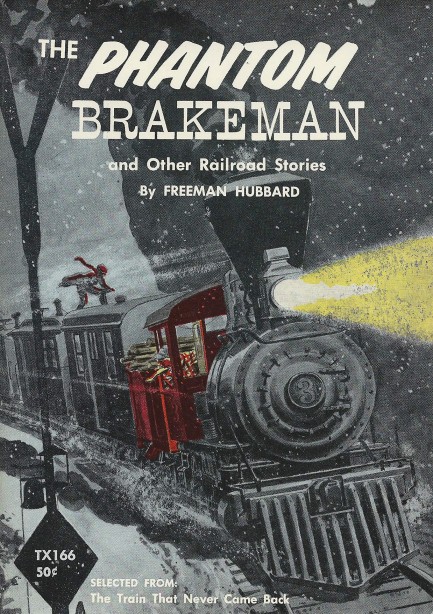 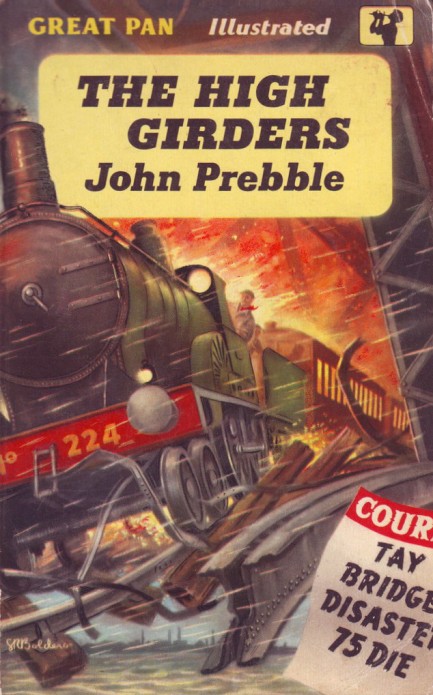 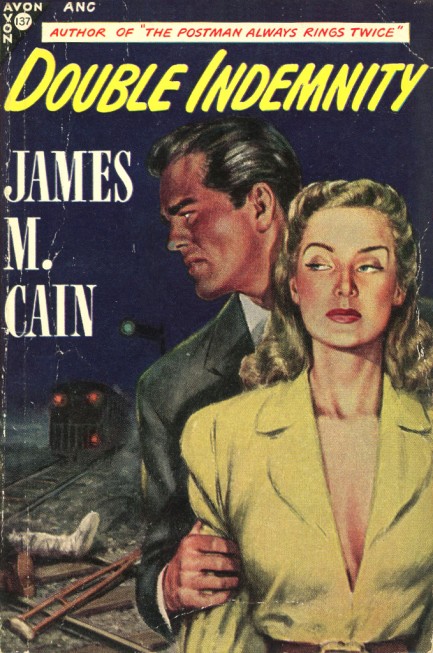 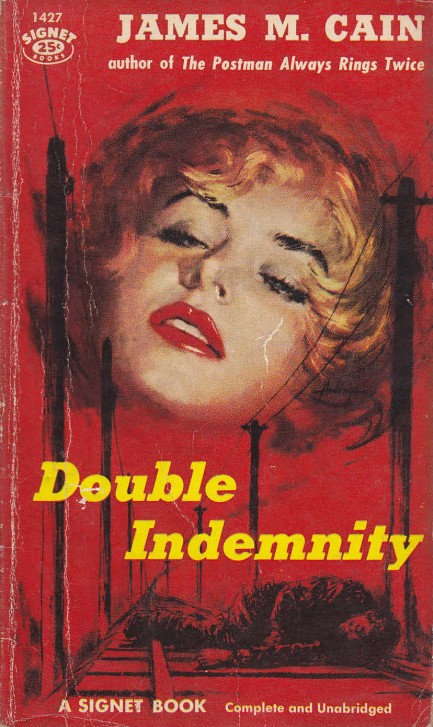 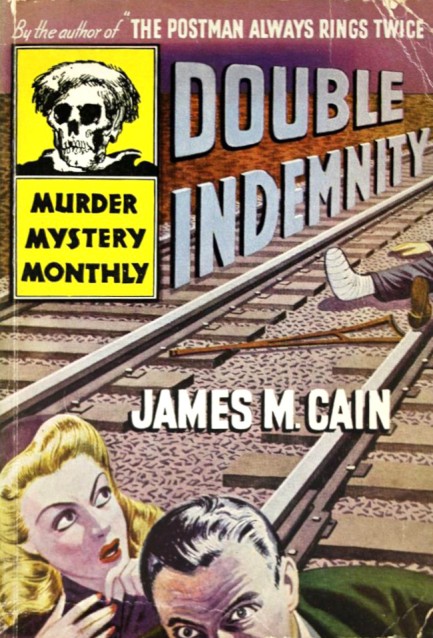 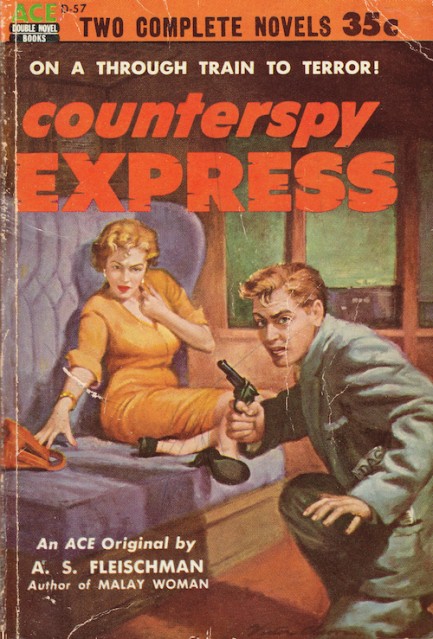 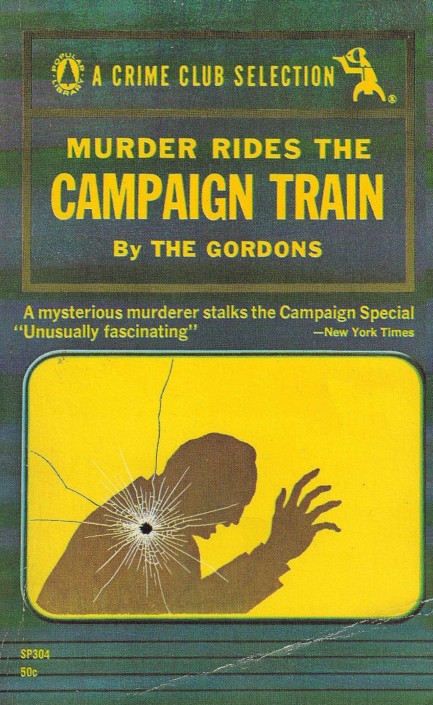 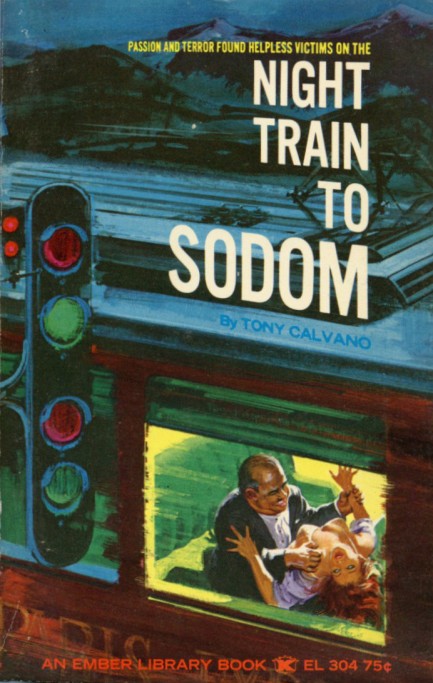 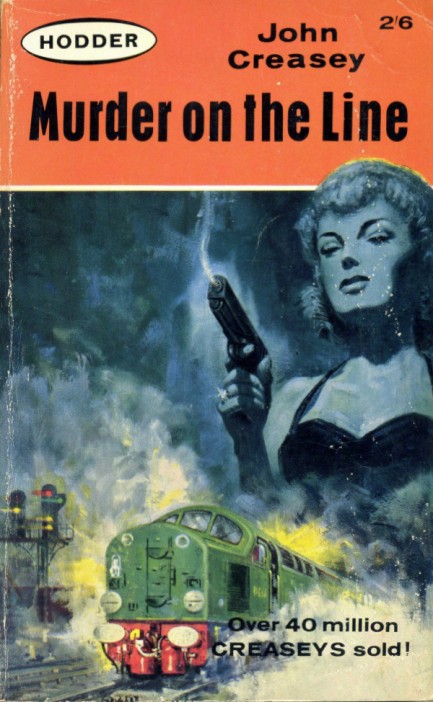 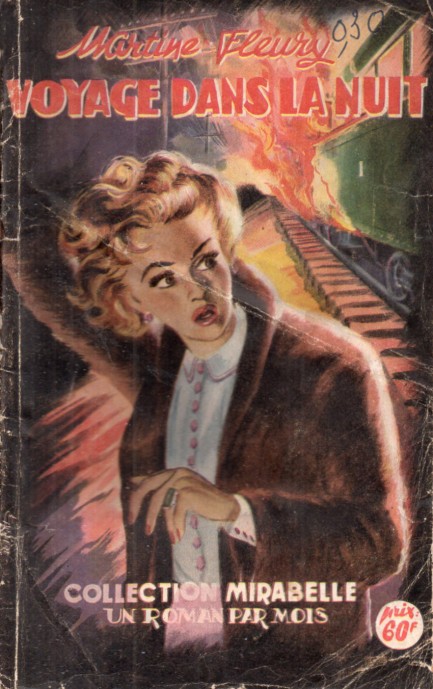 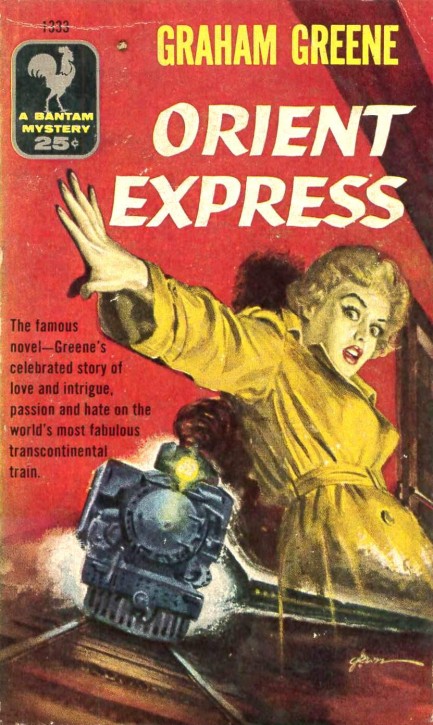 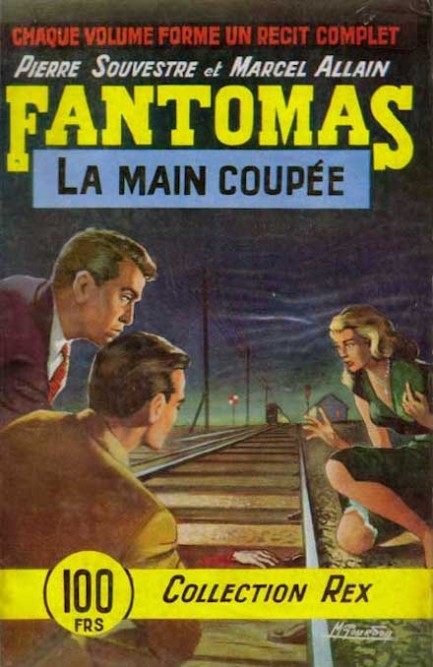 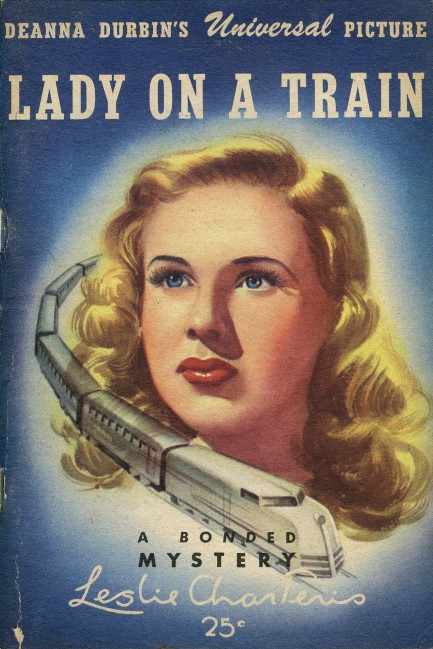  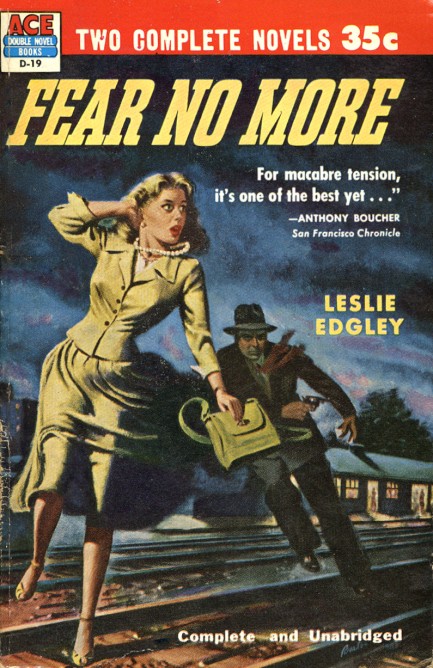 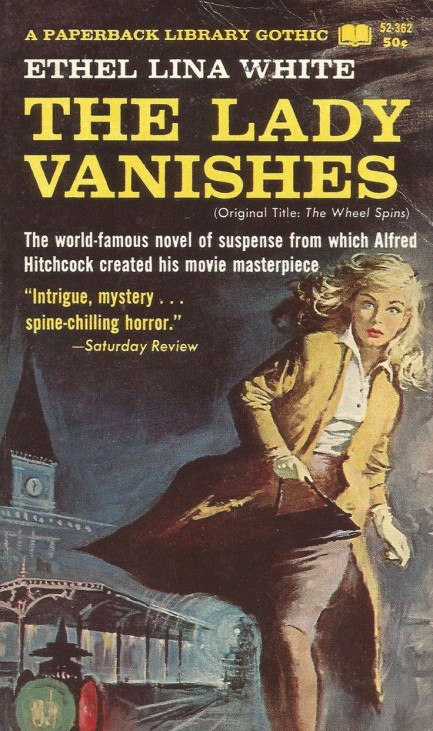 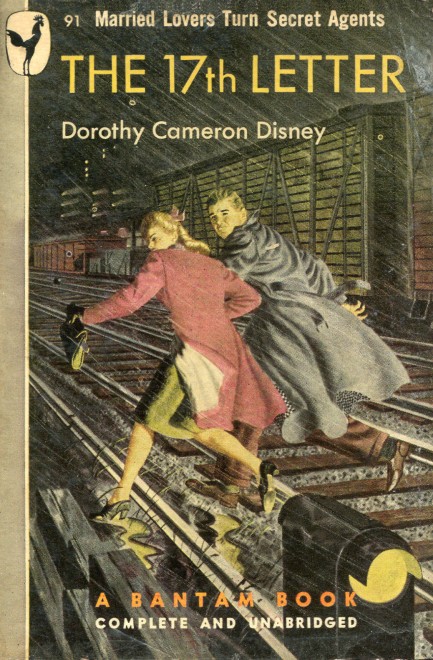 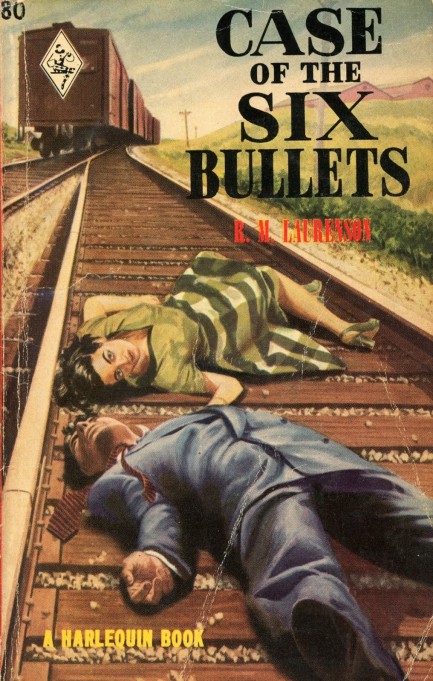
 James M. Cain spins a tale about an unusual love and an unusual life. 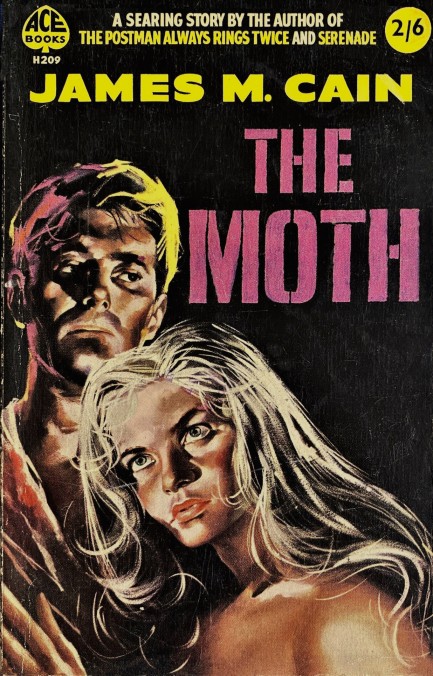
Vintage Ace paperbacks are considered highly collectible for a few reasons, including the fact that the company popularized the double novel. But we like Ace because it often did well with art. This front for James M. Cain's The Moth is about as striking as cover illustration gets. It's uncredited, but we know exactly who it is. It's Sandro Symeoni. How do we know? Because the cover at this link is confirmed to be Symeoni, and there's no doubt the artist is the same as above. Not only is the style a match, but so is the time period. This came in 1958, and Ace used Symeoni's art several times between ’58 and ’60. That makes this paperback a super discovery, because Symeoni, a brilliant Italian artist who specialized in movie posters, rarely painted book covers. It's possible that, as with Arthur Miller's Focus (you clicked the link above, right?) the art was borrowed from one of Symeoni's posters, but if so we don't know which one. Doesn't matter. Sandro kills again.
Moving on to the novel, Cain, one of the towering figures of pulp literature, stretches himself here to tell the life story of a man through his first thirty-five years, spanning the Great Depression, Prohibition, and World War II; his various jobs, schemes, and hustles; and his ups, downs, ups, downs, ups, downs, ups... We're not putting an end on that sentence in order to avoid giving a hint whether he ultimately triumphs or fails. For a time Cain's protagonist works in the oil business. For years he's a hobo riding the rails. For part of his life he's a renowned soprano. But no matter where he goes or what he does, there's a past destined to come full circle to stare him in the face. This is Cain's longest book, but it's pretty involving. Its only flaw—if it can be called that—is that it doesn't surprise. You know which untrustworthy friend will come back to haunt him, and which unlikely love will reappear to offer a chance at redemption. Still, a good read. We recommend it.
 Cain is guaranteed to deliver. 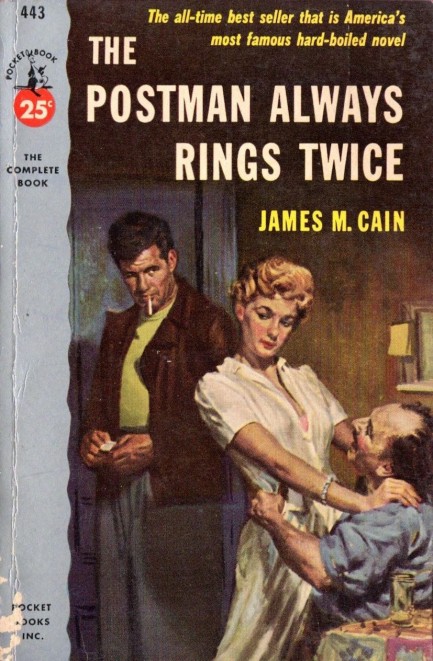
Above you see a Pocket Books cover for James M. Cain's The Postman Always Rings Twice, the 1953 edition. It has art from James Avanti, and is very different from Pocket's 1947 edition, which we showed you here. Avati is an illustrator we don't run across that often, but his work is easily recognizable, and always very good. See a few more examples here, here, and here. Needless to say (but we'll say it anyway), The Postman Always Rings Twice is a book you should read.
 Hmm. I know there are seven deadly sins, but maybe if I just keep doing lust over and over it'll only count once. 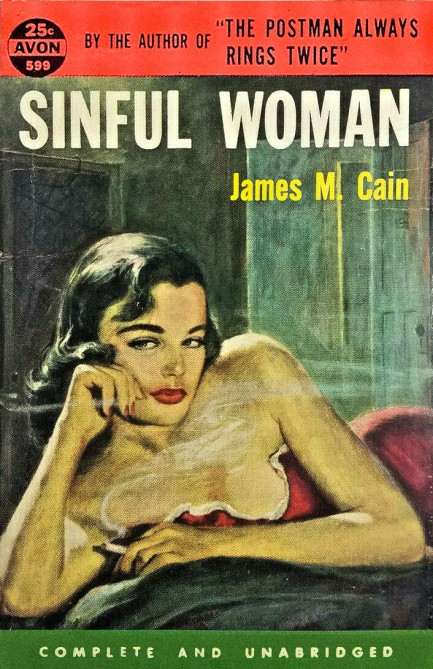
It's been a criminally long time since we've read a James M. Cain novel. We have several, so we'll have to remedy the omission pronto. The last one we read was Sinful Woman, and above we have the cover of the 1957 edition from Avon, which originally published the book in ’47. That earlier cover is spectacular, and we recommend taking a look at it here. We'll get back to Cain soon.
 Certain breeds of insects are going extinct, according to scientists. We didn't need their help to figure that out. 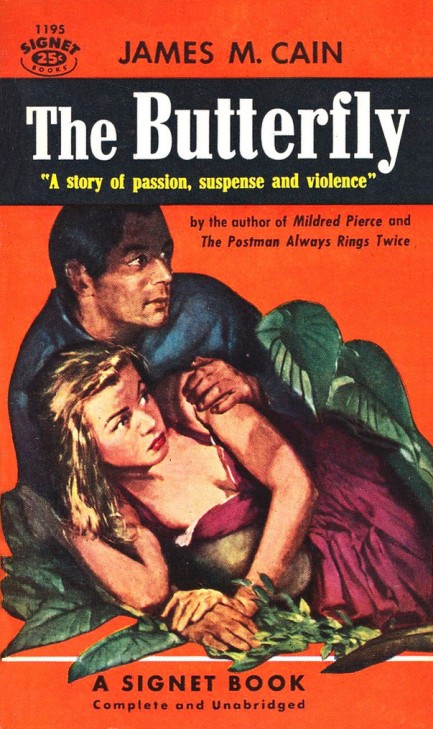
Above is an alternate cover for James M. Cain's racy 1947 novel The Butterfly. The edition we showed you previously (paired with a short write-up of the disastrous movie starring Pia Zadora) was from Dell, with art by Frank McCarthy. This one came from Signet in 1955, and it's really hard to find. By far it's the rarest of any of Cain's Butterfly editions. But it's worth seeking out because the cover is great. It's uncredited, though. See the previous cover here.
 In my experience the ones who think I'm sinful are always the ones I won't let join the fun. 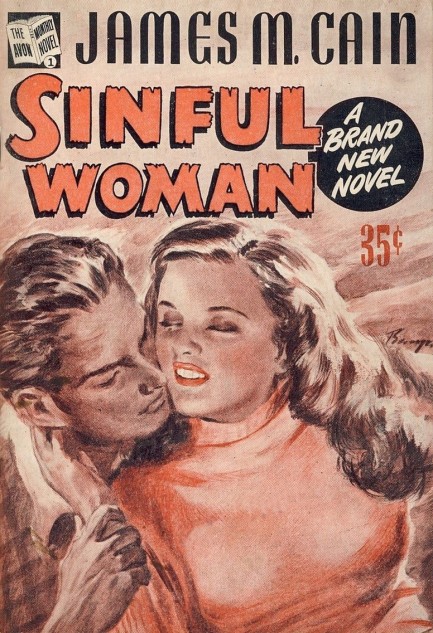
Above is a brilliant cover for James M. Cain's Sinful Woman painted by Barye Phillips, early work from him, and among his best. This was published by Avon in 1947, and though it isn't hard to find it's dear to purchase. The story involves a famous actress who goes to Reno for a quickie divorce from her movie producer husband. When she runs into problems she charms the local sheriff—a big fan of her work—into helping out, but must deal with increasing complications. Most agree Sinful Woman isn't Cain's best, but from a purely literary perspective he's a better writer than most, even in lesser efforts. It's well worth a read.
 The eyes have it in for you. 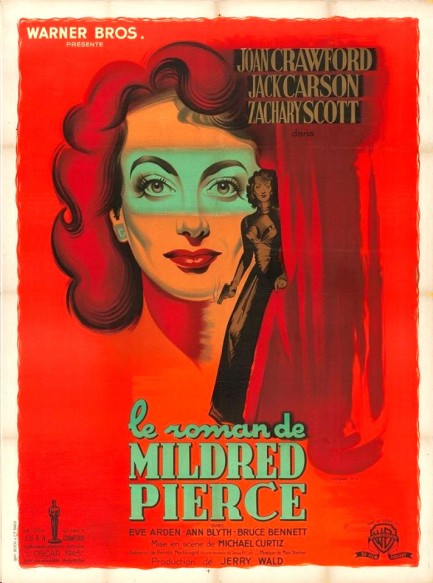
Above, a beautiful promo poster for the film noir Mildred Pierce made for the film's run in France, which began today in 1947, more than a year after its U.S. premiere. This is pure awesomeness from artist Roger Rojac. Note that it touts Joan Crawford's Academy Award triumph, her win as best actress. It was also nominated for best picture but beaten by Lost Weekend, which is these days considered a bit of a cheeseball classic. We have our earlier write-up on Mildred Pierce here, and a nice promo image for the film at this link.

|
 |

The headlines that mattered yesteryear.
2003—Hope Dies
Film legend Bob Hope dies of pneumonia two months after celebrating his 100th birthday. 1945—Churchill Given the Sack
In spite of admiring Winston Churchill as a great wartime leader, Britons elect
Clement Attlee the nation's new prime minister in a sweeping victory for the Labour Party over the Conservatives. 1952—Evita Peron Dies
Eva Duarte de Peron, aka Evita, wife of the president of the Argentine Republic, dies from cancer at age 33. Evita had brought the working classes into a position of political power never witnessed before, but was hated by the nation's powerful military class. She is lain to rest in Milan, Italy in a secret grave under a nun's name, but is eventually returned to Argentina for reburial beside her husband in 1974. 1943—Mussolini Calls It Quits
Italian dictator Benito Mussolini steps down as head of the armed forces and the government. It soon becomes clear that Il Duce did not relinquish power voluntarily, but was forced to resign after former Fascist colleagues turned against him. He is later installed by Germany as leader of the Italian Social Republic in the north of the country, but is killed by partisans in 1945.
|

|
|

It's easy. We have an uploader that makes it a snap. Use it to submit your art, text, header, and subhead. Your post can be funny, serious, or anything in between, as long as it's vintage pulp. You'll get a byline and experience the fleeting pride of free authorship. We'll edit your post for typos, but the rest is up to you. Click here to give us your best shot.

|
|

































